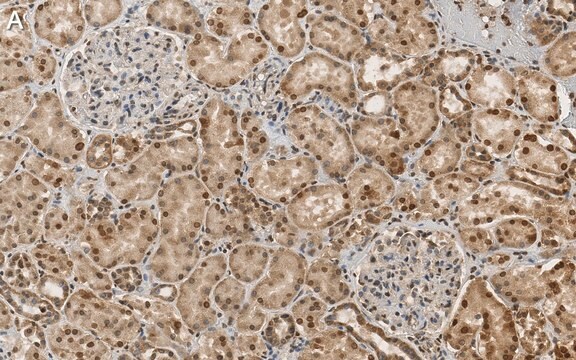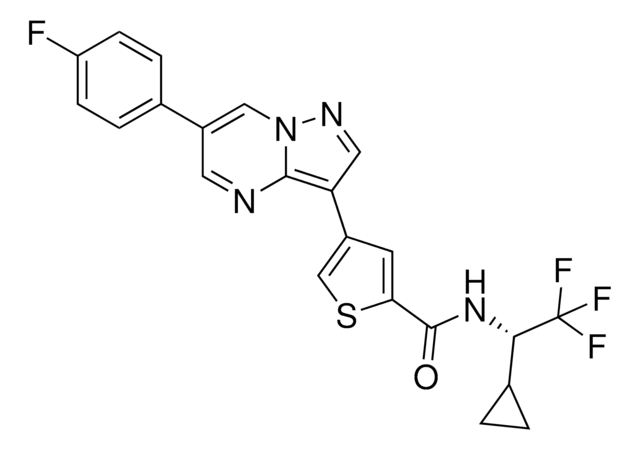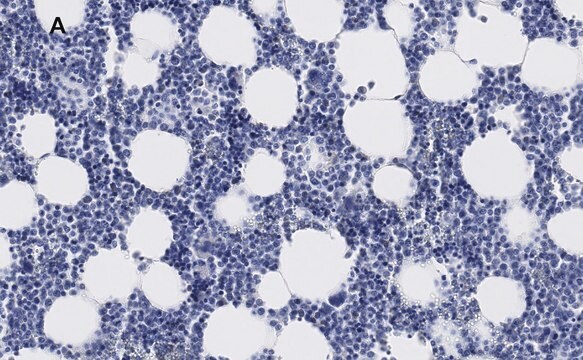ABN1362
Anti-RBPMS Antibody
from rabbit, purified by affinity chromatography
Sinónimos:
RNA-binding protein with multiple splicing, RBPMS, RBP-MS, Heart and RRM expressed sequence, Hermes
About This Item
Productos recomendados
biological source
rabbit
Quality Level
antibody form
affinity isolated antibody
antibody product type
primary antibodies
clone
polyclonal
purified by
affinity chromatography
species reactivity
human, mouse, rat
technique(s)
immunofluorescence: suitable
western blot: suitable
NCBI accession no.
UniProt accession no.
shipped in
wet ice
target post-translational modification
unmodified
Gene Information
human ... RBPMS(11030)
General description
Specificity
Immunogen
Application
Neuroscience
Sensory & PNS
Immunofluorescence Analysis: A representative lot detected RBPMS immunoreactivity primarily associated with cell bodies located in the ganglion cell layer (GCL) of paraformaldehyde-fixed mouse retinas by fluorescent immunohistochemistry using whole-mounted retinas (Rodriguez, A.R., et al. (2014). J. Comp. Neurol. 522(6):1411-1443).
Immunofluorescence Analysis: An 1:5,000 dilution of a representative lot detected RBPMS immunoreactivity among cells in the ganglion cell layer (GCL) of paraformaldehyde-fixed mouse retinas by fluorescent immunohistochemistry (Courtesy of Dr. Nicholas Brecha, David Geffen School of Medicine at UCLA).
Quality
Western Blotting Analysis: 0.5 µg/mL of this antibody detected RBPMS in 10 µg of mouse embryonic stem cell (mESC) lysate.
Target description
Physical form
Storage and Stability
Other Notes
Disclaimer
¿No encuentra el producto adecuado?
Pruebe nuestro Herramienta de selección de productos.
Optional
Storage Class
12 - Non Combustible Liquids
wgk_germany
WGK 2
flash_point_f
Not applicable
flash_point_c
Not applicable
Certificados de análisis (COA)
Busque Certificados de análisis (COA) introduciendo el número de lote del producto. Los números de lote se encuentran en la etiqueta del producto después de las palabras «Lot» o «Batch»
¿Ya tiene este producto?
Encuentre la documentación para los productos que ha comprado recientemente en la Biblioteca de documentos.
Nuestro equipo de científicos tiene experiencia en todas las áreas de investigación: Ciencias de la vida, Ciencia de los materiales, Síntesis química, Cromatografía, Analítica y muchas otras.
Póngase en contacto con el Servicio técnico








